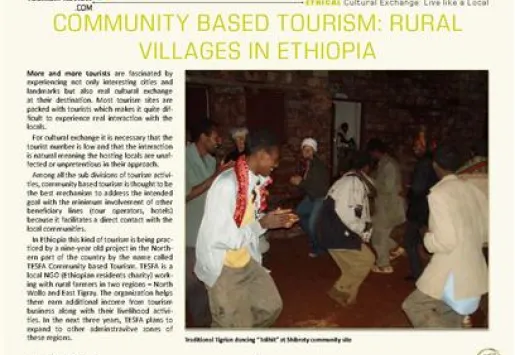
Tourism revenues have been rising for several years in Ethiopia. An economic windfall that could be held back by a social and security context that is not conducive to welcoming visitors.
Tourism in Ethiopia has become the essential part of the country’s economy. As a proof, it brought in $3.5 billion to the country in fiscal year 2017-2018, according to the tourism ministry. This represents an increase of 5% over the previous year's revenue of $3.32 billion.
Nearly 934,000 tourists visited the country during this period. Despite a target of 1.25 million visitors, the trend is still upward: 886,800 tourists were registered in 2016-2017. The entries into the country generated 177,000 jobs. This is slightly less than in the previous year, when 297,000 jobs were created.
This slight decline is explained by a slowdown in tourism in Ethiopia in recent months. "Although activity improved in the first and second quarters of the last fiscal year in Ethiopia, it decreased in the third quarter due to the instability in the country," said Gezahegn Abate, director of public relations at the Ministry of Culture and Tourism, in a statement.
Indeed, the country has been experiencing a very uncertain socio-political situation for some time. Anti-government demonstrations are a daily feature of the country. The most recent incidents to date were the riots and clashes that took place recently in the Somali region in the east of the country. Several thousand people had to flee their homes, following the confrontation between federal troops - who entered the town of Jijiga - and the Somali population. Riots that have also claimed an unknown number of victims.
A delicate security context, despite Prime Minister Abiy Ahmed's activism, which compromises domestic tourism. Last year, the authorities deplored the stagnation in the number of Ethiopian visitors, despite the growing number of foreign visitors. In order to reverse this trend, last September the government organized a programme around World Tourism Day to promote national tourism in Ethiopia among the local population. The activities had highlighted the historical and natural sites of the country.
Far from being the first tourist destination in Africa, compared to the 10 million visitors who visit Morocco every year, Ethiopia is nevertheless full of exceptional natural sites and historic monuments in excellent state.
The city of Lalibela, whose eleven churches carved out of rock attract tourists and Christians on pilgrimage, the city of Aksoum, one of the religious centers of the Ethiopian Orthodox Church, or the Simien National Park, the lower valley of the Omo, a prehistoric site, are all sites inscribed on UNESCO's World Heritage List. The rich and diversified tourist offer motivated the decision of the European Council on tourism and trade to name Ethiopia "the best tourist destination in the world" in 2015.













